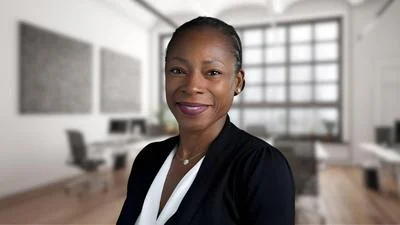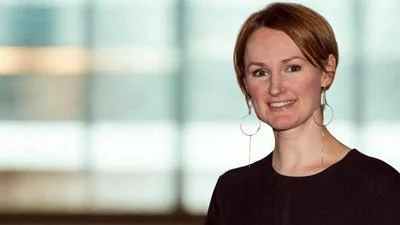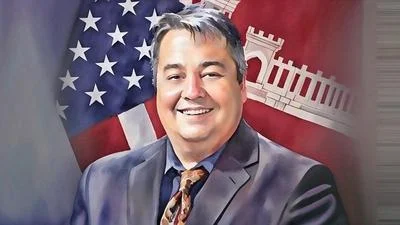The Congressional Record is a unique source of public documentation. It started in 1873, documenting nearly all the major and minor policies being discussed and debated.
“THE HUDSON RIVER SCHOOL OF PAINTING” mentioning the U.S. Dept of State was published in the House of Representatives section on pages H3049-H3051 on April 8, 2014.
The publication is reproduced in full below:
THE HUDSON RIVER SCHOOL OF PAINTING
The SPEAKER pro tempore (Mr. Joyce). Under the Speaker's announced policy of January 3, 2013, the Chair recognizes the gentleman from New York (Mr. Engel) for 30 minutes.
Mr. ENGEL. Mr. Speaker, since my election to the United States House of Representatives in 1988, I have been immensely proud to be a part of New York's congressional delegation.
My colleagues from New York and I--both Democratic and Republican--
have united many times to fight for causes that are critical for our State. In the wake of terrible tragedies, like September 11, 2001, and, most recently, Hurricane Sandy, we have come together to perform our most important duties as Members of Congress, which is our obligation to do what is best for the people of New York.
It is important, though, that we don't solely band together in times of tragedy; rather we must also gather in celebration of the people and occasions that make our Empire State a great State. That is why I am delighted to rise today in recognition of the Hudson River School of painters, the first school of art indigenous to the United States.
The Hudson River runs through my district and the districts of many of my colleagues, some of whom will be speaking here today as well; and we are very, very proud of that river and proud of what it represents.
The Hudson River School of Art is comprised of a group of 19th century painters, including Thomas Cole, Frederic Edwin Church, Asher Brown Durand, Jasper Francis Cropsey, Sanford Robinson Gifford, Albert Bierstadt, John Frederick Kensett, George Inness, Worthington Whittredge, and Thomas Moran.
Today, these artists' paintings can be found in the United States Capitol, the National Gallery of Art, and the State Department, as well as the Metropolitan Museum of Art in New York City, the Art Institute of Chicago, and the Museum of Fine Arts in Boston.
Next to me are portraits of two of the Hudson River School's most celebrated painters, Jasper Francis Cropsey and Thomas Cole, the father of the Hudson River School.
Now, the artist who did these sculptures is Greg Wyatt, my friend who is with us today, whose primary medium of artistic expression is cast bronze, and I would like for everybody to see these because they are truly magnificent and represent the greatness of our State and the greatness of the Hudson River.
On the third easel--right here--is Cropsey's 1860 masterpiece
``Autumn on the Hudson.'' It is truly beautiful, just as this portrait shows.
As its name suggests, some of the Hudson River School's most notable works portray the majesty of New York's Hudson River Valley. However, the Hudson River painters capture the grandeur of a variety of New York's national treasures, and, again, I am proud to represent part of the Hudson Valley.
From the Hudson Valley's lushness in Durand's ``The Beeches,'' to the majesty of the Catskills in Gifford's ``A Gorge in the Mountains,'' to the tranquility of the ocean in Kensett's ``Eaton's Neck, Long Island,'' the Hudson River School brilliantly encapsulated New York's diverse, yet unparalleled beauty.
I rise today not only to celebrate the Hudson River School's contributions to America's artistic canon, but also to the environment they so beautifully immortalize.
Hudson River School paintings helped Americans across the Nation understand the natural magnificence found across distant corners of the U.S. This understanding, in turn, helped nurture the idea that such magnificence ought to be preserved for future generations.
This idea culminated in 1916 with the creation of the National Park System and persisted into the 1960s when an environmentalist used Hudson River School paintings to demonstrate the need for legislation, such as the Clean Air Act and the Clean Water Act, to protect America's stunning resources.
How glad we are that this Congress passed those laws. It follows then that the Hudson River School illustrates not only what art can do for the individual spirit, but also for the health of the Nation.
Mr. Speaker, it is my hope that the residents of New York and the United States might gain an appreciation for the Hudson River School and its tremendous impact on our Nation and its culture. To help show our appreciation, I have introduced House Resolution 480, honoring the Hudson River School painters for their contributions to the United States.
As a New Yorker, I am truly grateful to these artists for immortalizing the pristine beauty of New York's past. In the forthcoming speeches, my colleagues from New York will highlight their own appreciation for the Hudson River School and its invaluable contributions to our Nation.
I want to also add, Mr. Speaker, that we have a number of people who have journeyed here from New York to celebrate these contributions and witness this Special Order.
Among those is our distinguished former colleague, the gentleman from New York, Congressman Maurice Hinchey, my good friend. I welcome Maurice, his wife, and his daughter back to Washington and all the people here today, including Greg Wyatt, Barnabas McHenry, and so many other wonderful people.
I now yield to my colleague from New York (Mr. Tonko).
Mr. TONKO. Mr. Speaker, I rise this evening in recognition of the accomplishments of the painters that are so prominent that are part of the Hudson River School of painting, and I do want to thank our colleague, Representative Engel, the gentleman from New York, for hosting this Special Order on the House floor to honor the 19th century Hudson River School of painting.
There are so many who cherish this institution, including, as was just mentioned, our former colleague, Representative Maurice Hinchey, who I see seated in the gallery, along with his family.
Certainly, he represented the Hudson River Valley region of New York in such fine fashion and with a great appreciation for the arts and for cultural education.
The school is also cherished by individuals like Barnabas McHenry who, as chair of the Palisades Interstate Park Commission, understands the value of this great school; and Greg Wyatt who, as you have seen, is a sculptor and has produced great work as director of the Academy of Art, also at Newington-Cropsey Foundation, and at Hastings-on-Hudson; and so many who believe in the message that is sent forth by this great institution.
The Hudson River School of painting was the first uniquely American style of painting. The school's style of painting was popularized in the 1820s and lasted for much of the 19th century. You already heard many of the prominent painters listed by Representative Engel in his comments. Today, we are here to honor their contribution to our region, to our State of New York, and to this Nation.
The Hudson River School of painting was founded in upstate New York in the Hudson River Valley and the nearby Catskill Mountains. The Hudson River School's landscapes capture the natural and rural beauty of my home State of New York on canvas, including the majestic and mighty waters of that great region.
The Hudson River Valley has always had a special importance for our Nation. It was the pathway for early settlers to begin the westward movement that expanded our Nation's borders. To this day, we celebrate the Hudson River School of painting across the country and continue to do so in areas like Albany, New York, the capital region of New York.
At the Albany Institute of History and Art, one of the oldest museums in the country, many of the works from the Hudson River School artists are on display. Last week, I had the privilege of visiting the institute of history and art and made certain that I stopped by to view the several paintings that are on display by these magnificent artists.
One of the paintings that caught my eye and is near and dear to many is that of Jasper Cropsey's ``Dawn of Morning, Lake George,'' which is pictured here beside me and captures the untouched beauty of Lake George.
Although the painting illuminates a quieter and distant time, many of the residents of the capital region continue to visit and enjoy the beauty of Lake George today.
Lake George is the largest lake in the Adirondacks and is within the Adirondacks State Park Preserve in upstate New York. The Adirondacks Preserve was established in 1892 by the State of New York and covers more than 6 million acres of protected areas.
Cropsey's ``Dawn of Morning, Lake George'' captures the serenity that he imagined once existed and reminds us of the spectacular sight of nature, including our trees, the mountains, and the waters.
In addition to capturing the beauty of New York, over time, the Hudson River School artists began traveling more widely, eventually painting scenes throughout New England, the American West, Western Europe, north Africa, the Middle East, and South America.
The paintings of the American West were particularly popular. These realistic scenes of what was then, essentially, foreign land to most of the American people sparked the imagination and echoed the voices of the growing grassroots conservation movement, illustrating the need to preserve the wonders of our natural American landscape.
In fact, many landscapes of the Hudson River School were used to support the creation of the first national parks. Inspired in part by these paintings, the National Park System has been a significant part of our environmental inheritance, protecting some of America's most iconic and majestic places. I have always believed that our national parks embody the history and heritage that make America unique.
Personally, I grew up in Amsterdam, New York, in the heart of the scenic Mohawk Valley of New York. My upbringing instilled in me a strong concern for the health of our environment and an appreciation for the delicacy of natural ecosystems and our native wildlife.
As someone who believes that we must leave our children and grandchildren with a rich and enduring environmental inheritance, I am especially grateful for the role that the Hudson River School of painting served and will continue to serve in inspiring our Nation to preserve our land and to preserve our water.
For many generations to come, the American people will have the opportunity to view these breathtaking paintings and will be reminded why we must continue to preserve America's richness of natural beauty.
Mr. Speaker, I will conclude my remarks by urging our colleagues and the public to recognize the Hudson River School of painting and the legacy forged by its artists. While the school has many ties to my home State and our capital region of New York, we can all appreciate the contributions made to this mighty Nation.
I would also like to thank our colleague, the gentleman from New York
(Mr. Engel), for his admirable work to promote and honor the Hudson River School of painting. Again, I thank him for this opportunity to proclaim the greatness of this great school of artists.
With that, Mr. Speaker, I now yield to our next speaker, the Representative from New York (Mr. Sean Patrick Maloney).
Mr. SEAN PATRICK MALONEY of New York. Mr. Speaker, President Franklin Delano Roosevelt once said:
All my life, I have dreamed of going back to my home on the Hudson River. It was the center of the world.
He was referring to his habit of, late at night, of remembering being a child, before he was stricken with polo, before he was President, before he was burdened with the awesome responsibilities of his office during a time of war.
{time} 2000
Being a child in the Hudson River meant sledding down a hill behind Hyde Park and feeling totally free. And he remembered that, as a President, to forget the burdens of his office and to remember the miracle and dream of his youth. Those of us who are blessed to represent the Hudson Valley understand that the Hudson Valley writes its beauty on our personalities and on our very souls. It inscribes us with its timeless beauty. And as it flows on endlessly by, we are reminded of the fleeting nature of our service and of our very lives.
A group of artists, including Thomas Cole, Asher Brown Durand, Jasper Francis Cropsey, and Frederic Edwin Church, somehow by hiking, sketching, and experiencing the Hudson River Valley found a way to translate what it means to those of us who live, work, and raise our families there into these permanent, lasting images. And our own modern-day genius, Greg Wyatt, has found a way to capture them. So we pause here tonight to honor that.
Drawing inspiration from our natural environment, these artists began painting scenes and now sculpting images. From across New York and our country, Asher Brown Durand, one of the original founders of the school, has one of the most beautiful pieces anyone will ever create of Beacon, New York. It is called ``Beacon Hills on the Hudson River.'' It was painted across the river in Newburgh in 1852. Today, my office in Newburgh looks out at that same image, at that same beauty.
Frederic Church was one of the first to capture Niagara Falls back in 1857. Within 2 weeks of its debut, his piece had lured 100,000 visitors to pay 25 cents apiece to view it.
Not only did the Hudson River School influence the modern-day environmental conservation movement, but these paintings actually inspired the establishment of our National Park System in the early part of the 20th century, which was, of course, formed by President Teddy Roosevelt. Teddy Roosevelt couldn't have spoken more true words when he said:
There are no words that can tell the hidden spirit of the wilderness, that can reveal its mystery, its melancholy, and its charm.
But, again, our painters from the Hudson Valley found that hidden spirit and that charm that Franklin and Teddy Roosevelt both remembered.
Dating back 100 years, my neighbors in the Hudson Valley take great pride in our natural resources and protecting and conserving this unique home for us and for our children and for generations to come.
I want to take just a minute to recognize my predecessor and our former colleague, Congressman Maurice Hinchey, and his family who have joined us here tonight. When you follow Maurice Hinchey in the Congress, you have some very big shoes to fill. And I have heard a lot about Congressman Hinchey and his service, and I always enjoy the stories because it sets for me an example of what I want to do in this body.
After Congressman Hinchey sacrificed for his country as a Navy sailor, as my own father did, he became a respected State lawmaker, and he proudly served here for two decades. My neighbors in the Hudson Valley know that he worked tirelessly for them, for economic justice and equal opportunity, because he believed that this government should work for everyone, including someone like him who grew up in a working class family and spent some time working in a factory, because our country, as Congressman Hinchey understood, is better off when leadership like his supports ordinary Americans, people like him who served in our military, our veterans, our working and middle class families who struggle to put food on the table and pay the bills but who can also appreciate the beauty of the environment and the timeless wonder of places like the Hudson Valley.
Congressman Hinchey played a critical role in the modern environmental movement even before it was widely recognized as important. Back in 1996 when I was working for President Clinton, Congressman Hinchey was authoring legislation that the President signed into law that established the Hudson Valley National Heritage Area. Because of Mr. Hinchey's leadership, the Hudson Valley National Heritage Area currently links over 100 individual sites, from Saratoga to Westchester, while showcasing the Hudson Valley's unique role in American history and development.
I want to commend Barnabas McHenry who is with us here today who has dedicated so much of his life to that same mission. Because of their leadership, my children and my grandchildren will see and be able to treasure the Hudson Valley's unique and incredible scenic, historic, agricultural, and natural wonders.
Congressman Hinchey always made sure that we remember the rich contributions of the Hudson River School of painters. Congressman Hinchey knows, like many of us do, that there is no place in the country that compares to the Hudson Valley, and those of us lucky enough to live there are not surprised that it was the birthplace of America's first and greatest school of art.
In closing, let me just say that not long ago, a friend of mine came over to my home, which is across from West Point and Cold Spring, and actually looks down the Hudson River towards Garrison and south towards the Bear Mountain Bridge. I walked him up to the property, and the sun was going down. A short while later after he left, he sent a note and he said:
Sean, I once saw a sunset like that in a Frederic Church painting, and I thought he made it up. But when I saw it with my own eyes at your house, I understood for the first time what inspired these great geniuses to try to capture the wonder and beauty that is the Hudson River Valley for all time.
We honor their success in doing so tonight, and we honor those who continue that legacy who join us here tonight. Thank you on behalf of a grateful Hudson Valley and a grateful Nation.
I yield back the balance of my time, Mr. Speaker.
Announcement by the Speaker Pro Tempore
The SPEAKER pro tempore. The Chair would remind Members to refrain from referring to occupants in the gallery.
The Chair will remind all persons in the gallery that they are here as guests of the House and that any manifestation of approval or disapproval of the proceedings is in violation of the rules of the House.
____________________








